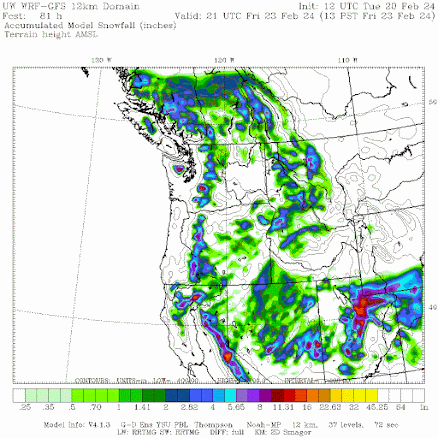Announcement: Doing an online zoom session with Patreon supporters at 10 AM tomorrow (Saturday)
______________________________________
The media this week was full of stories talking about aircraft going faster than the speed of sound.
Freak, supersonic wind speeds, some exceeding 800 miles per hour.
For reference, the speed of sound around cruise level (roughly 35,000 ft) is around 664 mph. Some eastbound, north Atlantic flights arrived 30 to 45 minutes early, one over an hour early!So what happened this week over the North Atlantic and how unusual was it? All will be revealed here.
First, a bit about planes going "supersonic". To be truly supersonic, the aircraft has to move faster than the speed of sound (roughly 664 mph a cruise altitude) relative to the air.
They never do.
When the media talks about "supersonic" they are talking about the speed with respect to the ground, which is NOT the same thing. Aircraft can go very fast relative to the ground if the aircraft has a large tailwind.....as was experienced earlier this week.
Since the average jet aircraft flies around 560 mph at altitude, a tailwind of over 110 mph would result in it moving faster than the speed of sound relative to the surface. The winds aloft were truly screaming along the U.S. East Coast on Sunday and Monday of this week. Here is a short-term forecast of the winds at a pressure of 200 hPa (about 38,000 ft) for Sunday morning. Wow.
Over the mid-Atlantic states and offshore, some winds were forecast to reach 215 knots (247 mph). That is cranking. And since these winds were from the west, aircraft heading to Europe were going over 800 mph to the east.
So how unusual were the winds, say over Washington, DC during this event?
There is a radiosonde (balloon-launched weather station) at Sterling, Virginia (Dulles Airport), just to the west of Washington, DC. On Sunday morning, the ballow measured a speed of 218 knots from the west.
Impressive. But how unusual? Below is a plot (red line) of the daily 250-hPa (about 33,000 ft) strongest winds at that location for a period from 1950 to today. The star indicates the Dulles winds on Sunday.
That morning, there were the second strongest winds at that level in over 70 years! That is very, very impressive.
Monday evening the strong winds moved offshore, still giving European-bound aircraft a mighty boost eastward (see wind speeds below)
Although these winds were exceptional over Dulles and clearly stronger than normal, they are not as exceptional when considered on a hemispheric or global scale.
To illustrate, below is a plot of the winds aloft (250 hPa level, about 33,000 ft) at the same time for the entire hemisphere. Several strong-wind hot spots are evident, with several showing winds exceeding 160 mph.
A forecast of the winds for next Wednesday at the same level shows very strong winds over the SE US, with plenty of "supersonic" potential around the world.
The southeast U.S. has done very well for strong winds during this period, but typically the strongest jet stream is found over southern Japan and out into the Pacific.
The strongest jet stream ever observed by a radiosonde? 259 mph near Yanongo Japan in 2004.



































.png)
.png)













